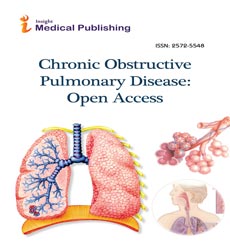Acute axonal sensoriomotor polyneuropathy in SLE hemodialysed patient - case presentation
CO-ORGANIZED EVENT:International Conference on Chronic Diseases & 6th International Conference on Microbial Physiology and Genomics
August 31-September 01, 2017 Brussels, Belgium
Lavinia-Oltita Bratescu, Marta-Emanuela Gemene, Cristina-Gabriela Moga, Adrian-Dorin Zugravu and Diana Copaceanu
Diaverum Clinic Morarilor, Romania
Carol Davila University of Medicine and Pharmacy, Romania
Carol Davila Nephrology Hospital, Romania
Posters & Accepted Abstracts: Chron Obstruct Pulmon Dis
DOI: 10.21767/2572-5548-C1-003
Abstract
Systemic lupus erythematosus (SLE) is most common autoimmune disease in women between 20 and 40 years. 10 to 30% of patients with proliferative lupus nephritis progress to ESRD and needs dialysis. Acute axonal sensoriomotor polyneuropathy is not common associated with SLE, even when SLE is active. SLE activity is much attenuated after dialysis started. A 48-yearold women, SLE diagnosed in 2002 was treated with Medrol and Plaquenil, then by hip arthroplasty for aseptic necrosis of the bilateral femoral neck. HD was started in 2007 (spurt severe lupus nephritis, intolerant to treatment with cyclophosphamide, anti-phospholipid syndrome - deep left leg thrombosis and left-cilioretinal artery and secondary hypertension). The monoclonal gammopathy in the context of persistent hypercalcemia (multiple myeloma was denied) was associated in 2014. The symptoms (extreme asthenia, important pain and muscle weakness, lower and upper limbs motor deficit, right peripheral facial paresis - a frigore) initially interpretated as a spurt of SLE activity (IgG, C3, ANA, Antibodies DNA ds positive) were treated with mycophenolate and methylprednisolone in Jan 2016 without improved evolution. Acute axonal sensorimotor polyneuropathy diagnosis was sustained in the Neurology Clinic by: ENG/EMG (acute demyelinating polyneuropathy, motor amplitudes reduced by driving blocks distale), albuminocytologic dissociation of the cerebrospinal fluid (LCR), no evidence of spaceoccupying processes by native brain CT. A right femoral central venous catheter vein was inserted and five plasmapheresis sessions were conducted followed by quarterly intravenous administration of 2g/kg of body weight immunoglobulin (five cures) with improved evolution. The first particularity of the case is the sustaining of SLE activity in HD patient. Usually, after dialysis autoimmune systemic disease shows no activity. The second feature of the case is the association of acute axonal sensorimotor polyneuropathy with SLE, whose causal relationship has not been definitely established.
Biography
Lavinia-Oltita Bratescu completed her Graduation at University of Medicine and Pharmacy from Timisoara, in Romania. From 2007, she worked as a Nephrologist at Sf Pantelimon International Healthcare Systems Nephrology and Dialysis Medical Center, in Bucharest. From 2012, she is a Chief Physician of this medical center and from January 2016 - Chief Physician at Diaverum Morarilor Nephrology and Medical Center in Bucharest, Romania. She completed her PhD in November 2013. Her PhD thesis entitled “The role of iron and hepcidin in pathogenesis of anemia on hemodialysis patients”. For the first time in a study in 2010 (published in Journal of Renal Nutrition), we measured hepcidin-25 using a commercial competitive ELISA method. Also, she has participated in national and international nephrology conference as a speaker and as poster presenter.
Google Scholar citation report
Citations : 130
Abstracted/Indexed in
- Google Scholar
- China National Knowledge Infrastructure (CNKI)
- Publons
- Geneva Foundation for Medical Education and Research
- Secret Search Engine Labs
Open Access Journals
- Aquaculture & Veterinary Science
- Chemistry & Chemical Sciences
- Clinical Sciences
- Engineering
- General Science
- Genetics & Molecular Biology
- Health Care & Nursing
- Immunology & Microbiology
- Materials Science
- Mathematics & Physics
- Medical Sciences
- Neurology & Psychiatry
- Oncology & Cancer Science
- Pharmaceutical Sciences

